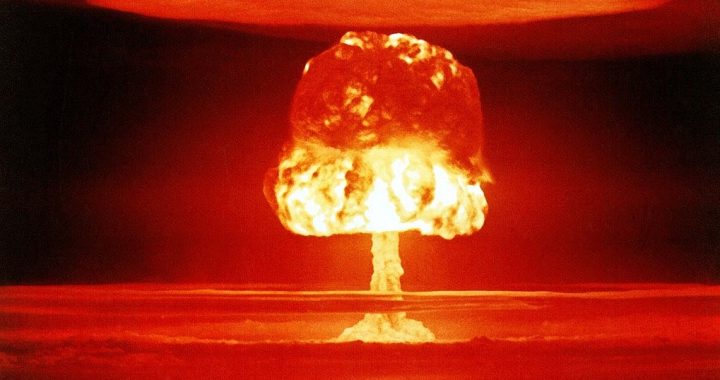Sometimes different cultural events occur simultaneously in a way that seems almost preordained to deliver a message to us about specific dynamics involving life in the world; one in which we are being warned about a similar danger through the lens of different events that occur at the same time. Next week the new film Oppenheimer opens in theaters, that which concerns the creation of the atomic bomb under the supervision of physicist Robert Oppenheimer. At the same time, writers, directors, actors and actresses are on strike against movie studios in Hollywood, one their strongest concerns being the use of A.I. technology to produce digital likenesses of those who appear in films.
The manner in which these two events are related has very much to do with runaway technology that should have been prevented from doing so years ago. As far as the creation of the atomic bomb, it was known years before the bomb was created by scientists working to develop it in the New Mexico desert during World War Two, and just prior to the bombing of the Japanese cities of Hiroshima and Nagasaki, what its catastrophic effects would be. In point of fact, ever since Enrico Fermi and his group of scientists discovered that bombarding certain elements, such as Uranium, with neutrons from other atoms could produce artificial radioactivity, the die was cast as far as the potential development of atomic weapons. That is, if scientists were willing to take the equivalence of matter and energy to its ultimate conclusion without interruption.
In similar fashion, when the developers of social media found that they could use various algorithms to create an artificial reality which many people accepted as being real, ultimately working its way through the labyrinth of virtual communication and virtual images that took the place of real ones, the die was likewise cast there. Now of course we have reached the point where we have A.I technology that can produce real world virtual images that seem all too real, such as those found in Meta, and pieces of writing which are entirely created by A.I. machines; and so even real world actors trying to make a living can become disposable as just a single image of theirs can be copied and used over and over by A.I technology.
The point is that the place to stop this sort of runaway technology, such as that which produced the atomic bomb, and now that in which A.I is threatening to replace human interactions, is at the beginning of its development when scientists and social theorists, through their foresight, are able to see exactly where it is leading. In doing so, those who are involved with this sort of prescient analysis of new technologies might heed the words of the late great social critic Neil Postman, who advised people to ask two questions whenever any new technological development comes to call. They are: what problems does this new technology solve, and what new problems does it create?
It is probably’ no coincidental mystery why a number of the actors and actresses out on strike, protesting the potentially dangerous infusion of A.I. into how they earn their living are the very same ones that appear in Oppenheimer. Perhaps a number of them have drawn the inference between how both atomic energy and A.I. technology may have been haphazardly introduced to the world before their potential consequences could be fully examined. Whether we realize it or not, the future that we will live in is already being created right now. Yet for us to realize this, it means taking to heart Neil Postman’s prescient warning to us all, and instead of being habitually excited about what the possibilities are when some new technology comes to call, taking a hard look way down the road toward where it may be eventually headed.
